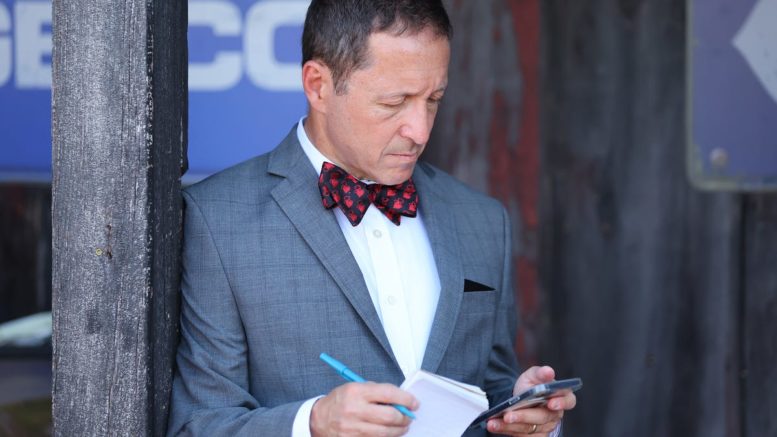Ever watch an entire industry have an existential crisis? That was the baseball media around and during the MLB Winter Meetings.
It’s important to note that the media of baseball face the same obstacles and challenges that the rest of media anywhere does. We’re all working for Google, from the most established journalist with Pulitzers coming out of their ears to a barely functional alcoholic like me. While it’s always been important to be “first,” it’s paramount now, which means a lot has to be sacrificed in the attempts to be so. Even if you’re only a reader, you’re familiar enough with keywords and SEO and all the other things journalists above a certain age did not sign up for originally. That’s the way the world is now, and in every industry everyone in it has to adjust with the tides, but that hardly means it’s seamless.
All of this was put into a particularly boiling cauldron with the biggest free agent in baseball history, who ended up signing the biggest contract in baseball history, as we all followed “As Shohei Turns.” Or didn’t turn, given the secrecy surrounding the courtship of Shohei Ohtani. Folks wanted The Bachelor, they got The Hunt For Red October. But merely tweeting or writing, “Nobody’s saying nothing,” isn’t going to please the bosses, so there were certainly a fair few who went for the downs and ended up looking like morons.
MLB beat writers went off the rails
It started with Buster Olney’s meltdown that Ohtani wasn’t doing his job for him, which he ended up doing anyway without Olney because he can and did easily announce his own signing. Then there was a Friday spent following a Big Ol’ Jet Airliner that carried every baseball fan too far away in either buying into Ohtani flying into Toronto to do…well, no one was sure because players don’t fly in to sign contracts and they can have medicals done anywhere, or fans were loudly declaring this was all a big nothing. Which it ended up being. Sure is something when Jon Morosi has to put out a full-scale apology.
It capped off today with Bob Nightengale in USA Today taking responsibility for his own part in all of this, while putting the whole industry on blast for being tools of agents everywhere. Certainly the growing influence of agents has bent many parts of all sports, and especially in this one where they’re allowed to tell reporters anything but teams aren’t. And now that every team has become so guarded in what they give to the press and the public — with entire departments whose sole purpose is to control what message gets into the bloodstream — it’s easy to see how reporters have become addicted to huffing the ether-soaked rag that agents continually provide them.
At least Adam Schefter is clear about what he is. Baseball media hasn’t quite been ready to bring itself to doing likewise yet, though Nightengale is certainly sounding the clarion call.
Truth be told, baseball media has been warring with itself for some time now, starting with the analytic revolution where a whole generation of thinkers from different places attracted fans into a new way of watching and analyzing the game, while those who were brought up getting loaded with GMs in hotel lobbies clung to the old ways that had been proven faulty. It’s not much of a surprise that front offices, more and more manned by people who come from the Prospectus and Fangraphs world, have something of an icy relationship with a media that used to treat them as invaders and frauds for challenging how the game was covered and discussed.
Now baseball media has to deal with the fact that players can go around and over them to communicate with the fans, and often do. Every player has an Insta or Twitter or Tik Tok. Shaq said many years ago, “We’re all media now.” Ohtani told the world he signed with the Dodgers yesterday himself. That’s kind of how it goes now.
MLB media has been off its game for a while
But it all just isn’t happening to the media. We only have to go back to last winter when everyone was breathlessly declaring Carlos Correa a Giant and a Met before failing physicals, and “Arson Judge” a Giant as well. Everyone looked terrible. The Mets and Giants looked like they were trying to get out of something while still grabbing the acclaim from at least looking like they wanted to spend big. Correa looked like he was using a garbage can as a leg. Reporters looked like dupes. But they couldn’t wait around for medicals to be issued, could they? The SEO overlords wouldn’t have it (and notice the Dodgers haven’t said anything yet).
Certainly media members have become pawns. Agents use them to drive up the price on their free agents and increasingly trade opportunities as they become the conduits for those more and more. You can see this gone wild during the summer in European soccer, where agents run the show even more than here.
Where does the traditional baseball media fit now? Players are so heavily coached and watched by PR staffs now that postgame quotes rarely are worth the time. Analysis is handled by so many different outlets now with various methods to cater to any type of fan. The “insider” role, as we’ve seen, basically just is a tool of agents. Local reporters are chained to access they can’t live without but dare not challenge with anything that might upset the team. And even when they do the job as it has been done, like say with Orlando Arcia mocking Bryce Harper after Game 2 in the NLDS — which gave that series a whole new spice that fans loved and is one of the specialties of reporters — Atlanta’s players and organization couldn’t stop wetting themselves over it, and you can get everyone’s access next season is going to be different and guarded.
It’s a different world. No one knows where they fit now, and apparently the only thing left to do is bitch about it until we all figure out what’s next.
Follow Sam on Twitter @Felsgate and on Bluesky @Felsgate.bsky.social
Original source here
#MLB #media #normal #week





